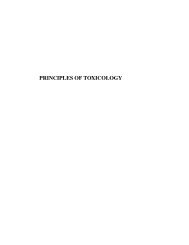Insect-pests - Biology East Borneo
Insect-pests - Biology East Borneo
Insect-pests - Biology East Borneo
Create successful ePaper yourself
Turn your PDF publications into a flip-book with our unique Google optimized e-Paper software.
30 <strong>Insect</strong> Pests and Diseases of Major Plantation Species<br />
<strong>Insect</strong> <strong>pests</strong><br />
Several species of subterranean termites are reported<br />
to attack young trees, up to 6 years old, often causing<br />
mortality up to 80% (Intari 1979; Intari and<br />
Wiriadinata 1984). <strong>Insect</strong>icidal treatments have been<br />
standardised for control. Among non-insect <strong>pests</strong>, a<br />
mite causes leaf gall.<br />
Diseases<br />
No disease has been encountered.<br />
Threat assessment<br />
Melaleuca cajuputi (as M. leucodendron) has been<br />
cultivated successfully in Indonesia for a long time.<br />
Apart from the subterranean termites that can be<br />
controlled effectively by soil treatment with suitable<br />
insecticides, there is no major threat of <strong>pests</strong> and<br />
diseases. The leaves contain chemical components<br />
that act as a feeding repellent to some insects<br />
(Doskotch et al. 1980; Alonso et al. 1996).<br />
4.17. Ochroma pyramidale<br />
Indonesian common name: Balsa<br />
Ochroma pyramidale (syn. O. lagopus; O.<br />
grandiflora) (Bombacaceae) has been planted in small<br />
areas in Indonesia, particularly, Java. A typical<br />
pioneering species native to Central and South America<br />
(Wiselius 1998), it has been planted mainly in degraded<br />
lands in Java and plantations are being established in<br />
Central Kalimantan.<br />
<strong>Insect</strong> <strong>pests</strong><br />
The red borer, Zeuzera coffeae (Lepidoptera,<br />
Cossidae) has been reported in a plantation 1.5 years<br />
old in Java (Wiselius 1998). This moth caterpillar is<br />
known to attack coffee, tea, cinchona and a few other<br />
small trees. The larvae bore into woody stems and<br />
branches and make a longitudinal tunnel along the pith,<br />
often causing death of the distal part of the branch. In<br />
most species it has not been a serious threat. No other<br />
pest has been noted on this species in Indonesia.<br />
Diseases<br />
No disease of O. pyramidale has been reported from<br />
Indonesia.<br />
Threat assessment<br />
Pests of O. pyramidale, recorded outside Indonesia,<br />
include a shoot borer, Anadasmus porinodus<br />
(Lepidoptera, Stenomidae) in Costa Rica (Becker<br />
1974) and a leaf roller, Sylepta derogata (Lepidoptera,<br />
Pyralidae), a common pest of malvaceous plants, in<br />
Kerala, India (Mathew 1980). All the known <strong>pests</strong>,<br />
including Z. coffeae in Indonesia, are polyphagous<br />
insects and there is no major threat to plantations of<br />
O. pyramidale in Indonesia.<br />
Diseases recorded outside Indonesia include a brown<br />
root rot in areas previously planted with cocoa in Papua<br />
New Guinea, caused by Phellinus noxius (Dennis<br />
1992); a bark canker in Ecuador, with which the<br />
hyphomycetes fungus Stilbella ecuadorensis was<br />
associated (Morgan et al. 1991); and a die-back in<br />
Kerala, India with which the fungi, Calonectria<br />
rigidiuscula and Fusarium moniliformae were<br />
associated (Sharma et al. 1985). However, there is no<br />
threat of disease in Indonesia where the tree has been<br />
grown successfully for a considerable time.<br />
4.18. Octomeles sumatrana<br />
Common name in Indonesia: Benuang<br />
Octomeles sumatrana (Datiscaceae) occurs naturally<br />
in Indonesia, except in Java and Nusa Tenggara<br />
(Fundter et al. 1997). It is fast growing and produces<br />
a light timber which is used for indoor construction.<br />
Plantations are being raised in Sumatra under the HTI<br />
scheme.<br />
<strong>Insect</strong> <strong>pests</strong><br />
The leaves are attacked by a moth caterpillar,<br />
Characoma sp. (Fundter et al. 1997). No information<br />
is available on the seriousness of damage.<br />
Diseases<br />
No diseases are known.<br />
Threat assessment<br />
No reliable judgment can be made as the plantation<br />
history is so short.
















